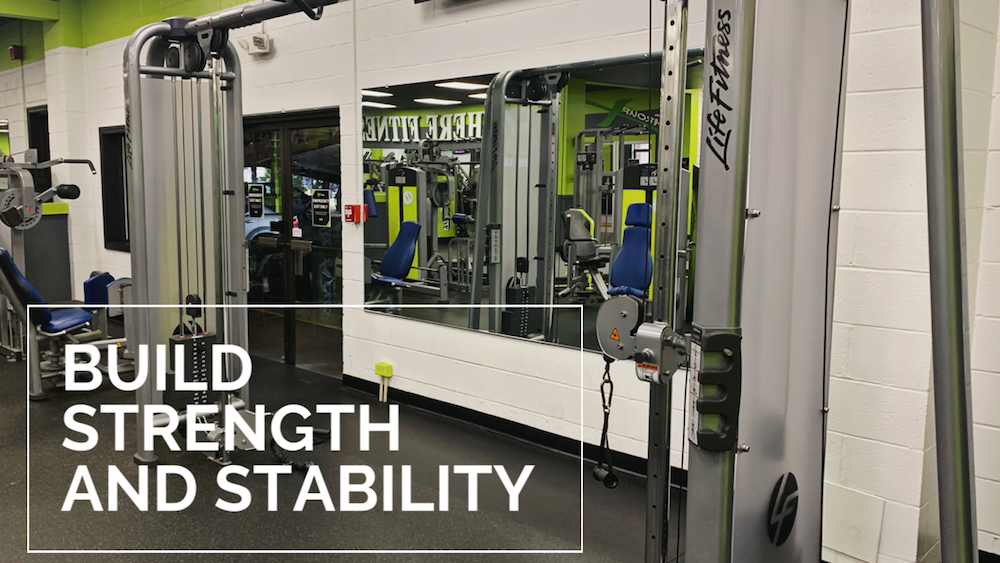Cable exercises can often be overlooked in workout programs. There are a number of reasons why you should make training on a cable machine a staple in your program. At Fit Focus Laconia, we have a number of different cable machines to choose throughout the weight floor. Here are some reasons why cable machines are great followed by cable exercises from our trainers you can try in your next workout!
Safety and convenience
Cable exercises are safer than working with dumbbells or barbells. The weight stays within the machine so you never need to worry about picking up dumbbells that are too heavy and being unable to safely put them down. Also, there’s no need to stack plates or do much set up when using a cable machine. This makes them much more convenient and allows you to move around the gym more quickly.
Build core strength and stability
Often times, cable exercises are done in a standing position. Being in a standing position means your entire core including your abdominals, obliques, glutes, quads, and erector spinae have to work to stabilize against the weight of the cable. Think about doing a standing cable back row. Not only are you working out the muscles of your back, but you’re also engaging your core to stabilize you in the standing position.
Keep tension and add variety
Cable machines allow you to keep constant tension during an exercise. There’s no “resting” during an exercise, like at the top of a bicep curl. More time under tension means more muscle building capacity. Cable machines also allow you to add a lot of variety to your workouts without needing much equipment. You can get a full body workout with just one cable machine! Check below to find out how.
Exercises from our NASM certified personal trainers
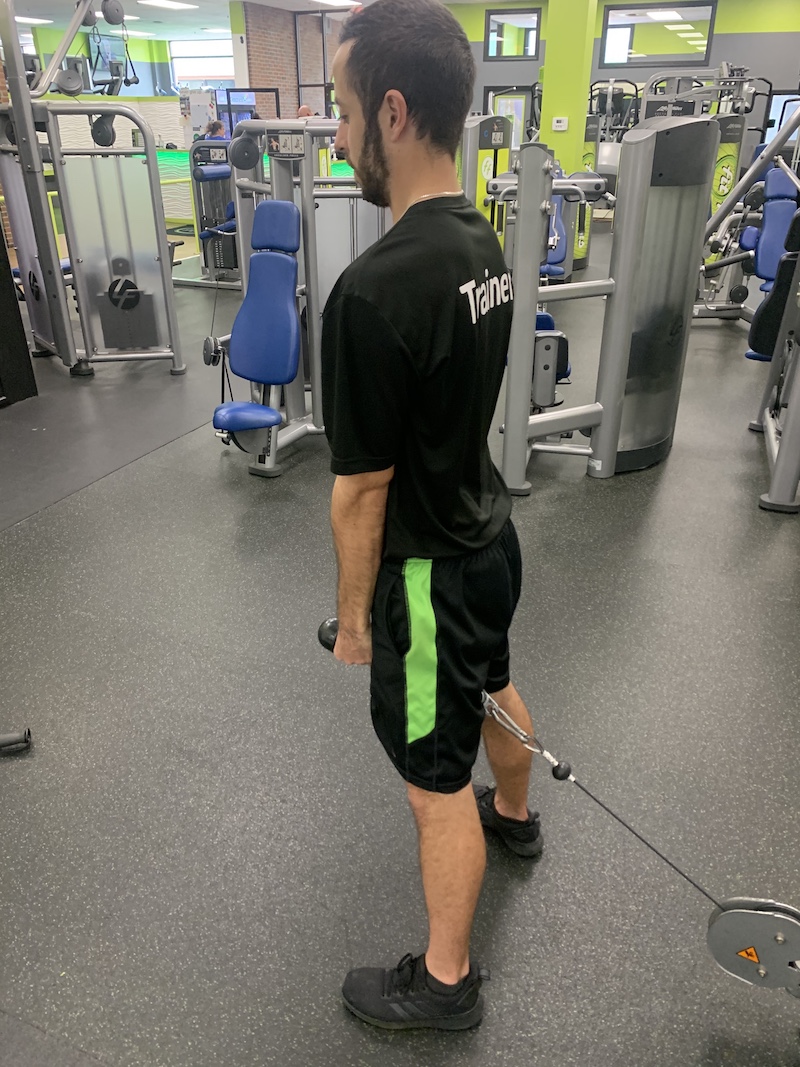
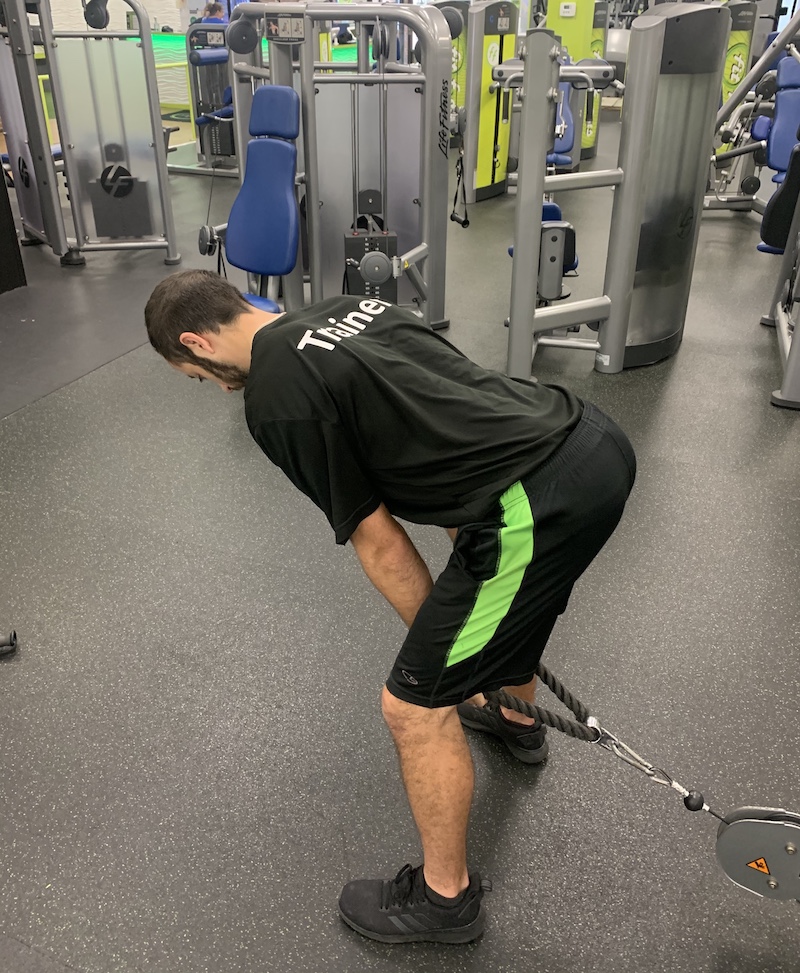
Warren Bartlett says, “The cable pull through is a more advanced hip dominant exercise for people looking to add some variety to their training. The exercise primarily works the glutes but also works the back and helps spinal stability. To properly perform the cable pull through you will need the tricep rope and the setting on the cable machine set all the way to the ground. Grab the rope with a neutral spine and take a couple small steps forward. The goal of the exercise is to hip hinge so the knees should only bend a couple degrees, almost all of the movement comes from bending about the hip. As you bend at the hip, keep the arms straight and allow the cable to slide through the legs. Once your back is parallel to the ground you are finished with the first portion of the lift and you can begin to ascend by standing back up. To finish the lift squeeze the glutes and pull the cable through the legs!”
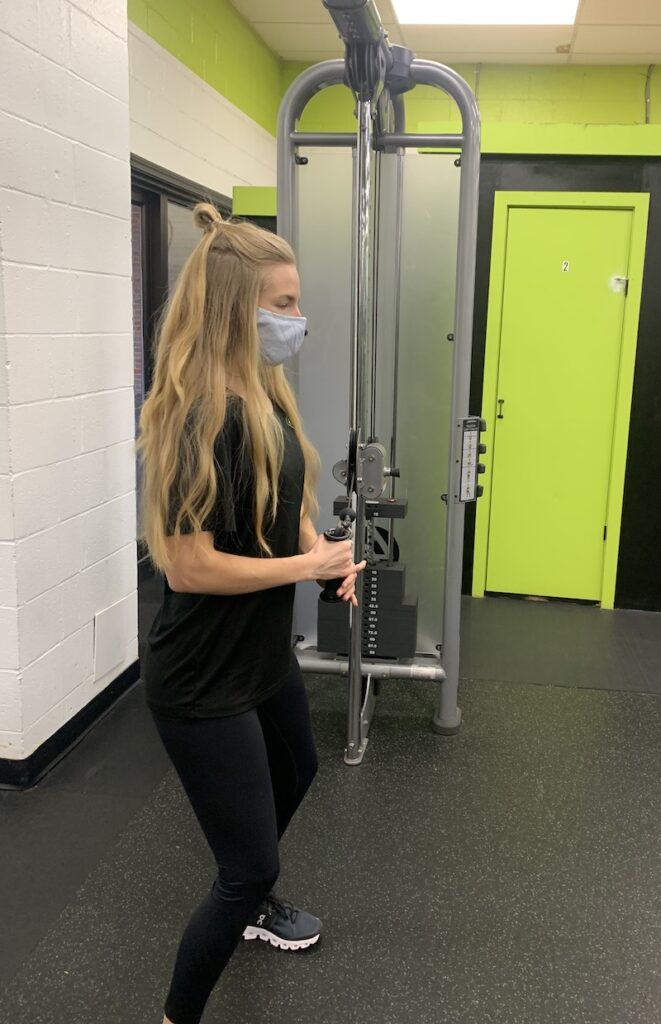
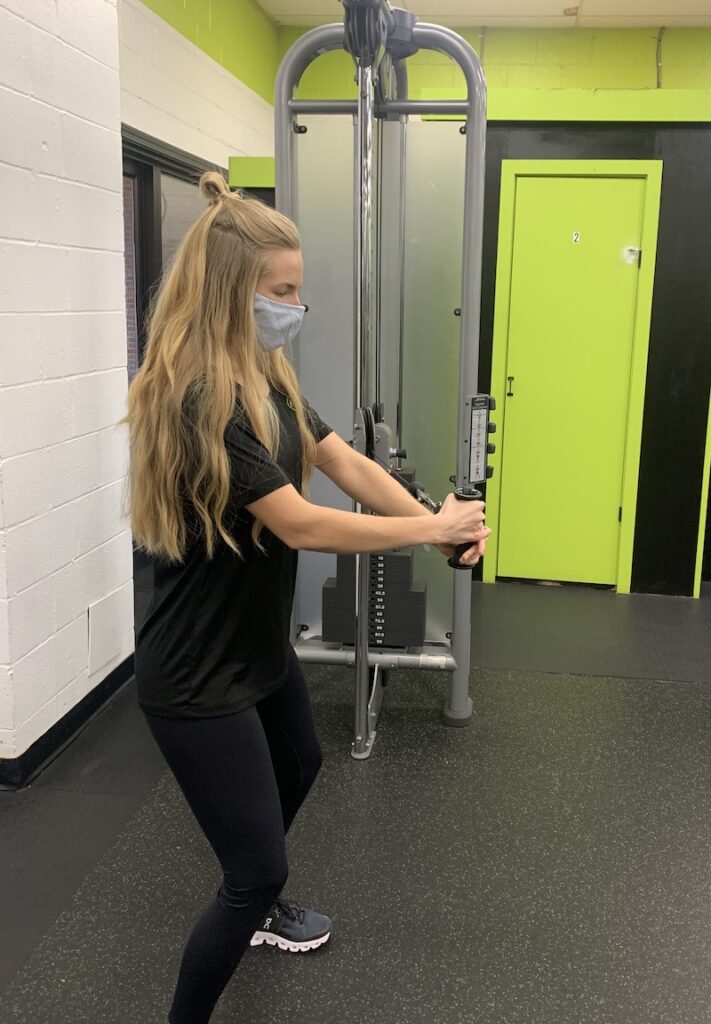
Sydney Vachon says “Pallof presses are great for building core strength by resisting rotational forces. Start by grabbing the handle and stepping to the side so that there’s tension. With a slight bend in your knees, hold the handle at your midsection, above your belly button. Extend your arms while resisting the tension of the cable. One press is one repetition. Do 3-4 sets of 8-12 repetitions.”
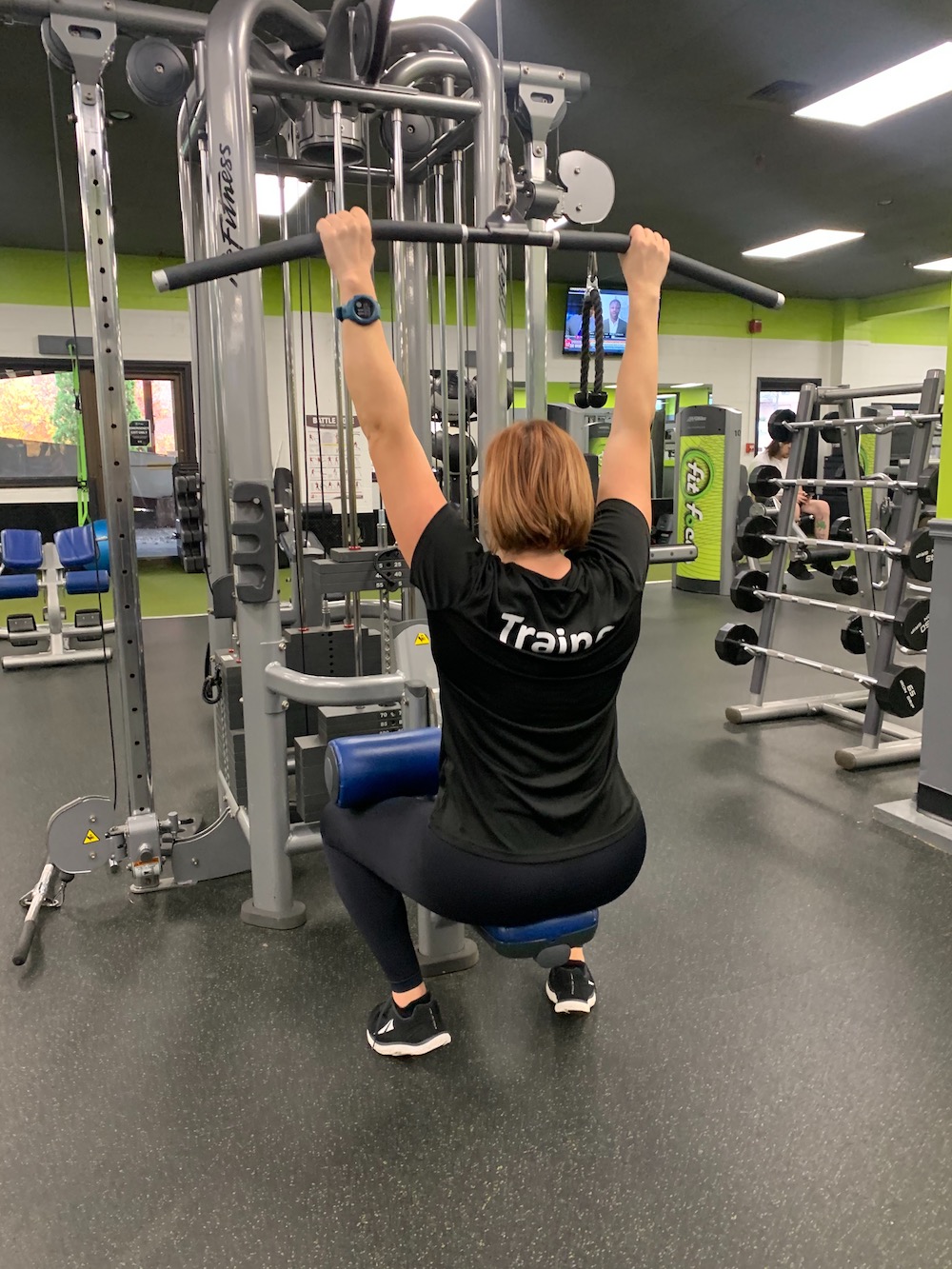
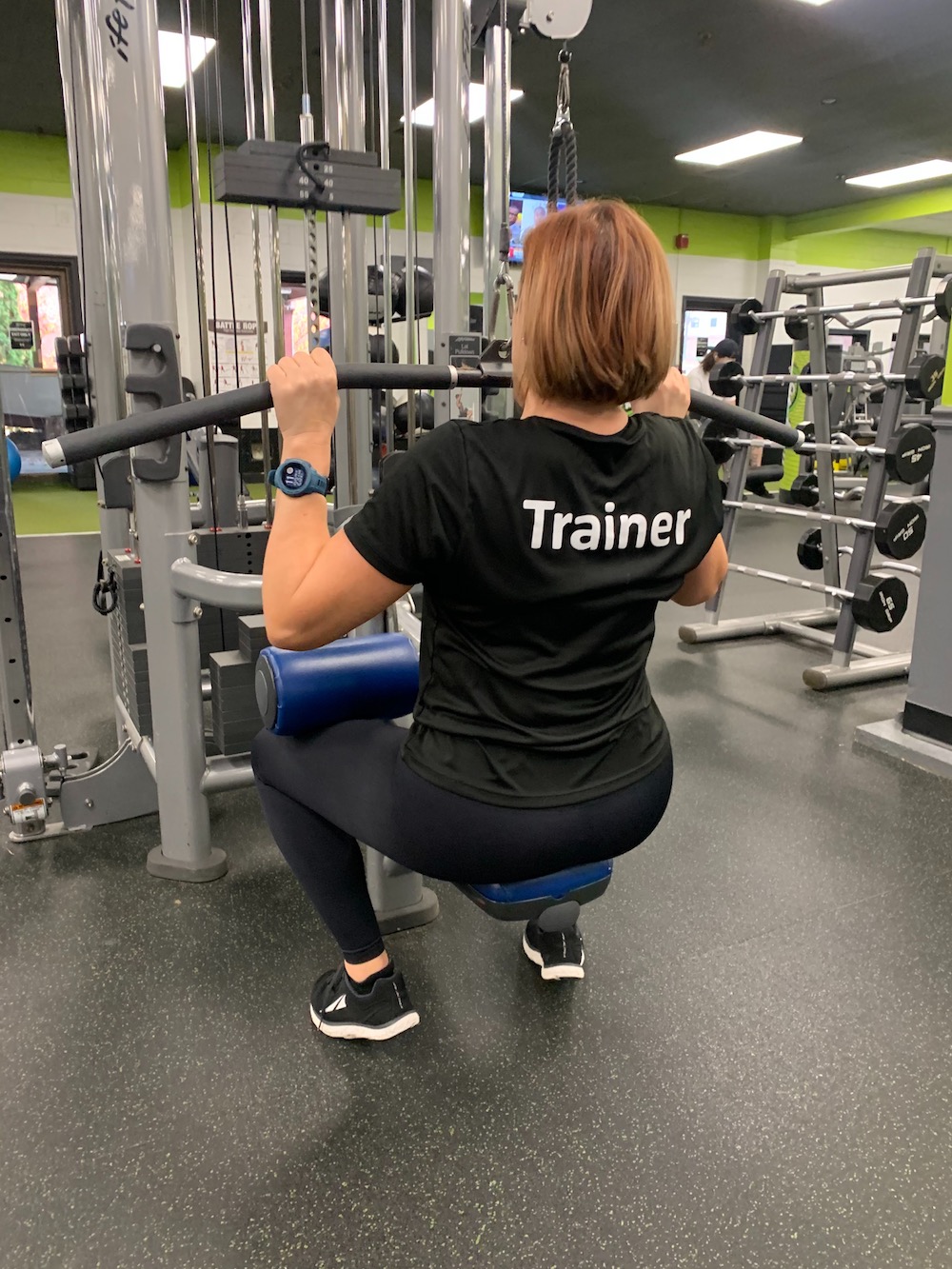
Deanna Mazzei says, “The lat pulldown is one of my favorite exercises to do on the cable machines because it works your back and biceps, aka the ‘glamour muscles.’ How to perform the lat pulldown: 1) Adjust the knee pad so your thighs fit underneath comfortably and attach the wide bar handle to the pulley system 2) Grasp the bar with an overhand grip (palms facing away) and your hands just outside shoulder width 3) Lean back slightly and with your core braced, pull the bar down and towards your chest, stopping at about chin level. 4) Slowly raise the bar back to starting position and repeat for the desired number of reps.”


Monica Mosca says,”For cable curtsy lunges, use the ropes and stand up straight, engage your core and relax your shoulders! Cross one leg behind the other making sure you keep your weight in the heel of your front foot. Make sure you keep your upper body straight with your arms loose to prevent the wrong muscles from activating. Lower towards the floor and focus on feeling it in the gluteus medius. Then switch legs!”
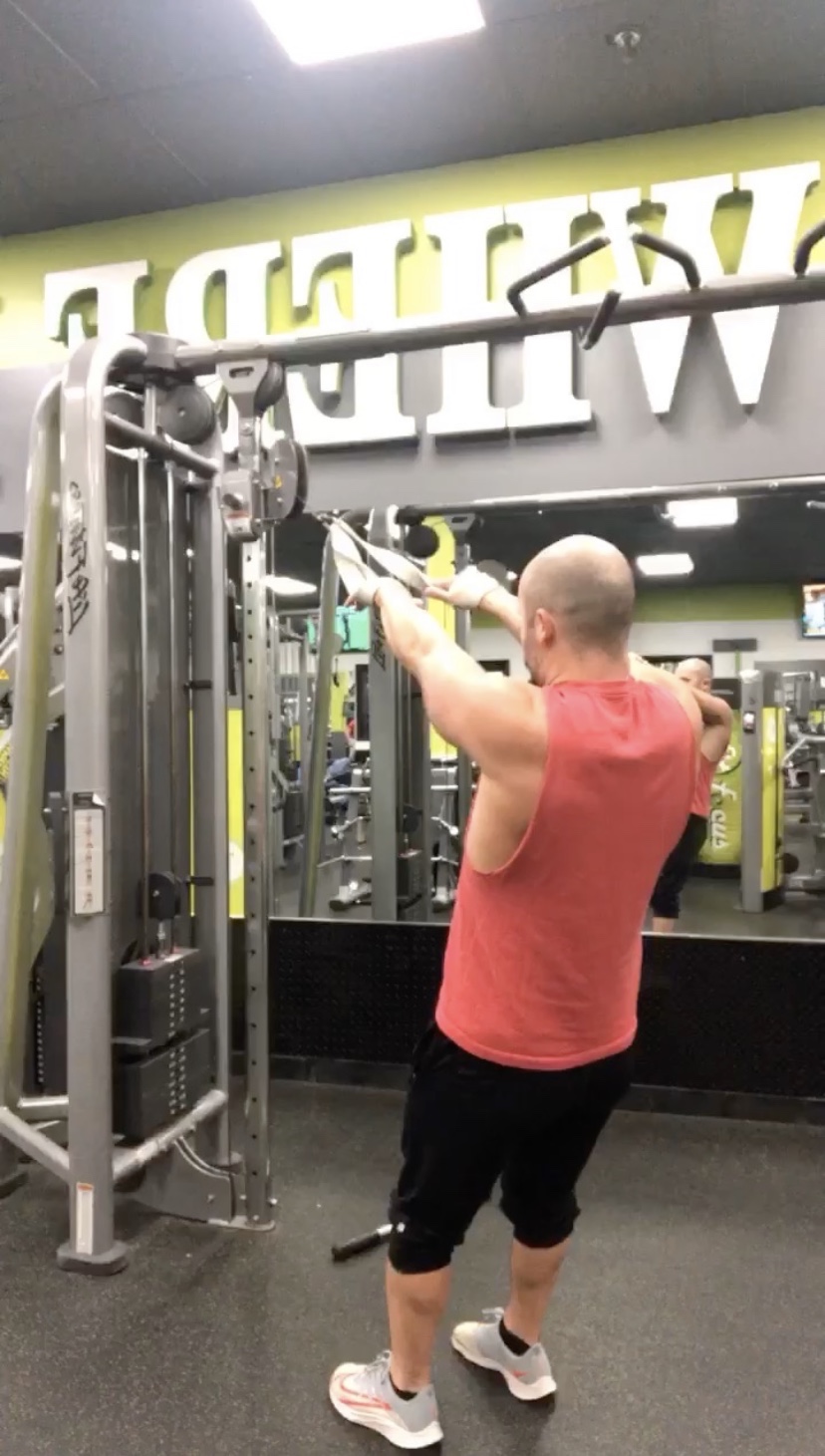
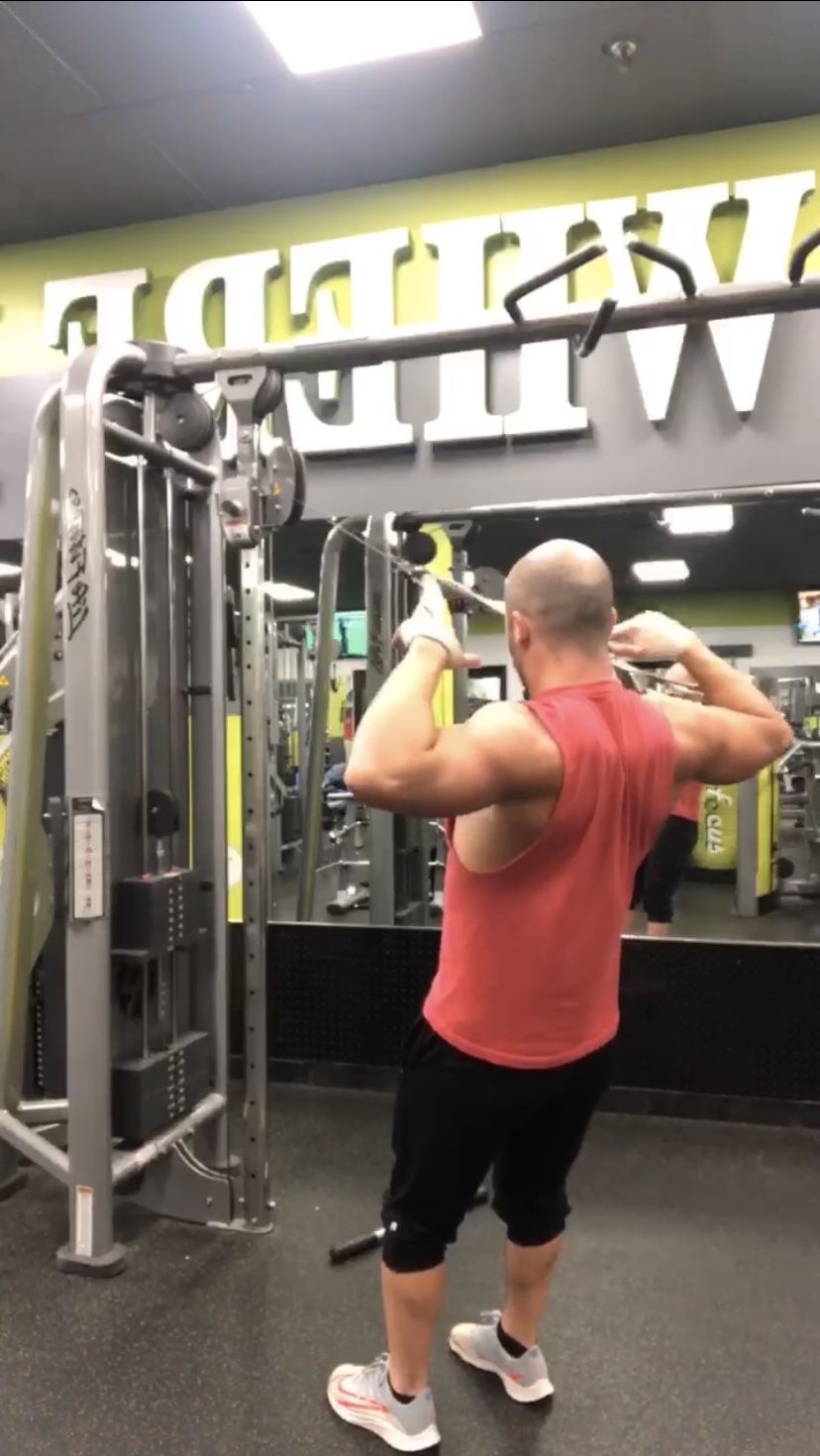
Jeremy D’Amour says, “Face pulls are a great exercise performed using the cable tower. The rear delts are the primary muscles targeted while the rhomboids and traps also play a role in executing this move. By implementing a band around the wrists instead of grabbing a rope it allows for more focus to be placed on the upper back and less force generated by the forearms and biceps.”
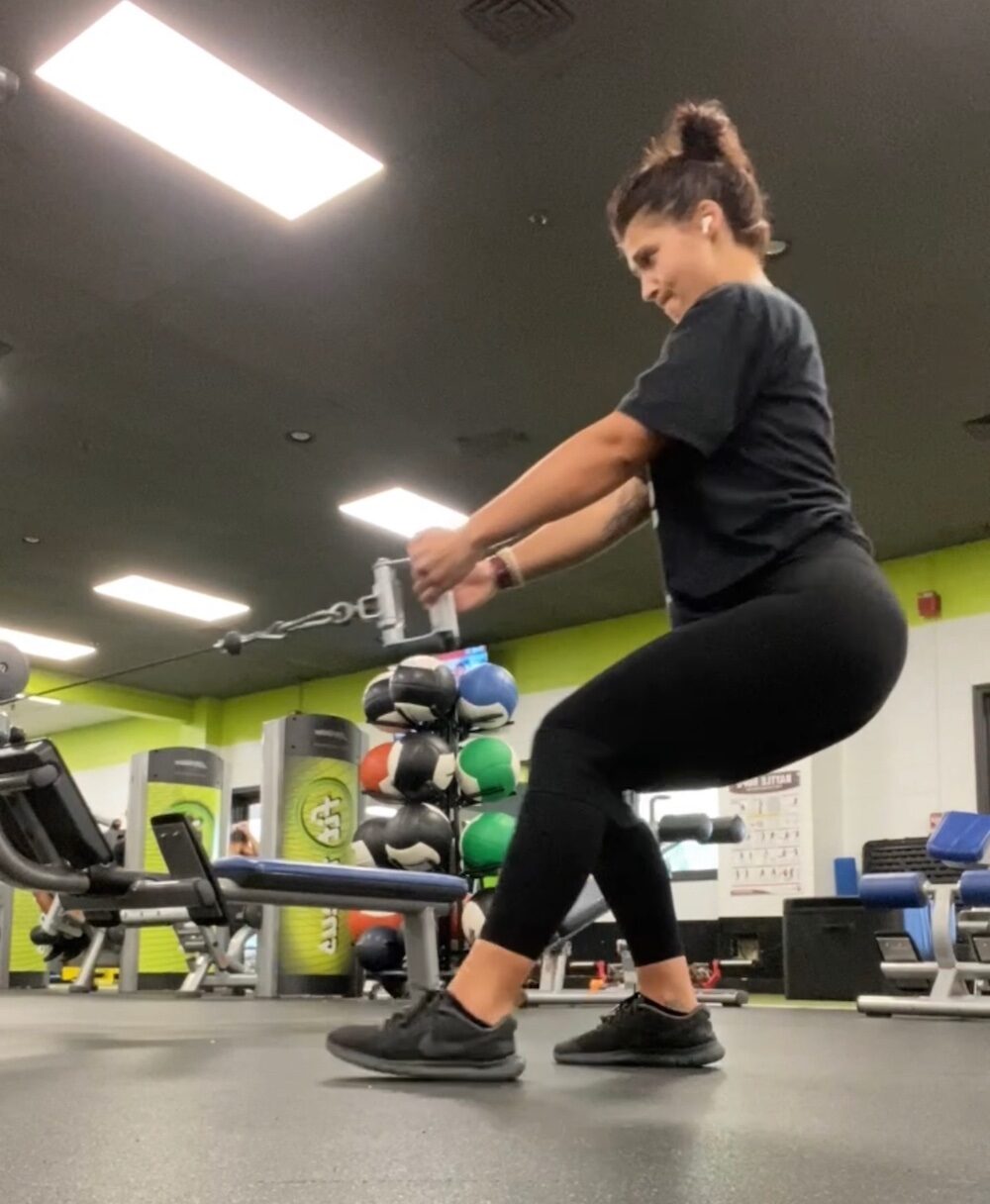
Colleen Holt says, “Duck walks exercise places a tremendous amount to pressure on your thigh muscles and glutes. For example, with the normal squat, you are going through a full range of motion with the muscle so parts of the muscle aren’t always firing as much when you are at different points. With Duck Walks, since you are staying low, the pressure stays consistent on the same muscle fibers which causes them to fatigue very quickly.”
Give us a call at Fit Focus Laconia or stop by the front desk to book your free one-on-one assessment with one of our personal trainers!

